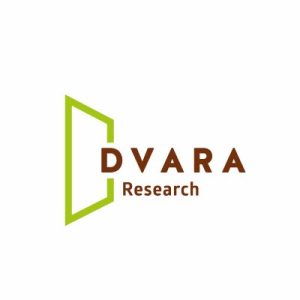Background
Internal migrants form a crucial part of the informal labour force, primarily employed in construction.[1] The construction sector in India employs approximately 51 million individuals and contributes to 9% of India’s GDP, making it one of the most crucial sectors of the Indian economy. However, the informal nature of work in this sector renders its workers most vulnerable.
To provide social security and safe working conditions to workers, the Government of India enacted the Building and Other Construction Workers’ (regulation of employment and conditions of service) Act, 1996 (BoCW).[2] Under the BOCW Act, every state government is directed to set up a state-level BOCW Board and BOCW Welfare Fund. Employers of construction workers are required to pay the BOCW Cess, which facilitates the social security benefits provided by the BOCW Board.
The ambit of the Act covers many categories of workers – unskilled, semi-skilled, and skilled, including those within supervisory, technical, or clerical roles. During the COVID-19 pandemic, state governments were asked to aid construction workers registered under the state BOCW Board by utilising the cess fund.[3] While several states initiated the process of Direct Benefit Transfers to registered workers, it continues to exclude a large proportion of the construction workforce that is not registered and hence unable to access benefits under the BOCW Act.
Along with inadequacies in implementing the BOCW Act, there is a need to understand the role of all stakeholders involved in the registration process. Employers, contractors, unions, labour officials and other intermediaries can provide evidence for the exclusion construction workers face in the registration and as beneficiaries.
Overview of Research Study
We worked to understand the end-to-end journey to access the entitlements under the BOCW Act. We focused on four districts of Maharashtra, a state with the highest number of interstate migrants in India.[4] The teams mapped out the beneficiaries’ exclusions faced at different stages based on the Dvara Research Exclusion Framework that outlines various axes and stages of exclusion in Direct Benefit Transfers.[5] Our key research questions were:
1. What are the various entry-level barriers that eligible[6] workers face while attempting to register themselves in the BOCW Welfare Board of Maharashtra?
2. What are the various challenges that registered workers face while attempting to access the entitlements under the BOCW Act in Maharashtra?
- What are the specific challenges faced by female migrant workers while attempting to access the entitlements due to them under the BOCW Act in Maharashtra?
- What are the challenges that stakeholders like civil society organisations, trade unions, private sector companies and government representatives face when facilitating workers’ access to the BOCW card in Maharashtra?
To answer these research questions, we conducted key informant interviews with construction workers, industry partners and organisations in Maharashtra that facilitate workers’ BOCW registration. We interviewed a total of 56 workers through telephonic and in-person mode. The team developed the interview guide through a thorough analysis of the literature and past field experience with construction workers in Maharashtra. We conducted the in-person interviews of workers in the district of Thane through a field visit to a labour Naka in the district. The study also involved key informant interviews with four non-profit organisations and workers’ unions that operate in Maharashtra, particularly in the Mumbai region. We identified the organisations based on their engagement with migrant workers in Maharashtra and their involvement in the BOCW registration for construction workers. The organisations and unions interviewed were involved at a grassroots level with workers in the unorganised sector, including construction workers who find work at labour nakas – a colloquial term for a labour junction.
This study aims to provide policymakers and researchers with a comprehensive overview of the various impediments that actors within the BOCW ecosystem face. We hope that the study’s findings can guide stakeholders to streamline the Act’s implementation.
In this series’s next set of blog posts, we will provide challenges and gaps in the BoCW Act implementation and highlight the viewpoints of multiple stakeholders in the BoCW Act registration and service delivery.
[1] Kumar, S., & Fernandez, M. (2015). Urbanisation-Construction-Migration Nexus in 5 cities in South Asia. LSE. Resource document https://assets.publishing.service.gov.uk/media/57a0895de5274a27b2000043/61261_Urbanisation-Construction-Migration-Nexus_Final-Report-5.pdf
[2] Construction work, according to National Industrial Classification, 2008, comes under 3 major categories –
- Construction of buildings,
- Civil engineering works (roads, railways, utility projects), and
- Specialised construction activities like demolition, site preparation, and installation activities.
[3] Press Trust of India, Ministry of Labour & Employment, 2020. Retrieved from Ministry of Labour & Employment
[4] Census of India (2011): Migration. Retrieved 8 March 2022, from: https://censusindia.gov.in/census_and_you/migrations.aspx
[5] Retrieved from https://www.dvara.com/blog/2021/02/11/proposing-a-framework-to-document-exclusion-in-direct-benefit-transfers/
[6] As per the Maharashtra BOCW welfare board, a worker is eligible if they are between 18 to 60 years of age, have worked for more than 90 days in the last 12 months in Maharashtra, have proof of residence, identity and Aadhar card. Retrieved from https://mahabocw.in/workers-registration/
Cite this item:
APA
Dvara Research, I. M. (2022). DVARA-IMN BOCW Series. Retrieved from Dvara Research.
MLA
Dvara Research, India Migration Now. “DVARA-IMN BOCW Series.” 2022. Dvara Research.
Chicago
Dvara Research, India Migration Now. 2022. “DVARA-IMN BOCW Series.” Dvara Research.



